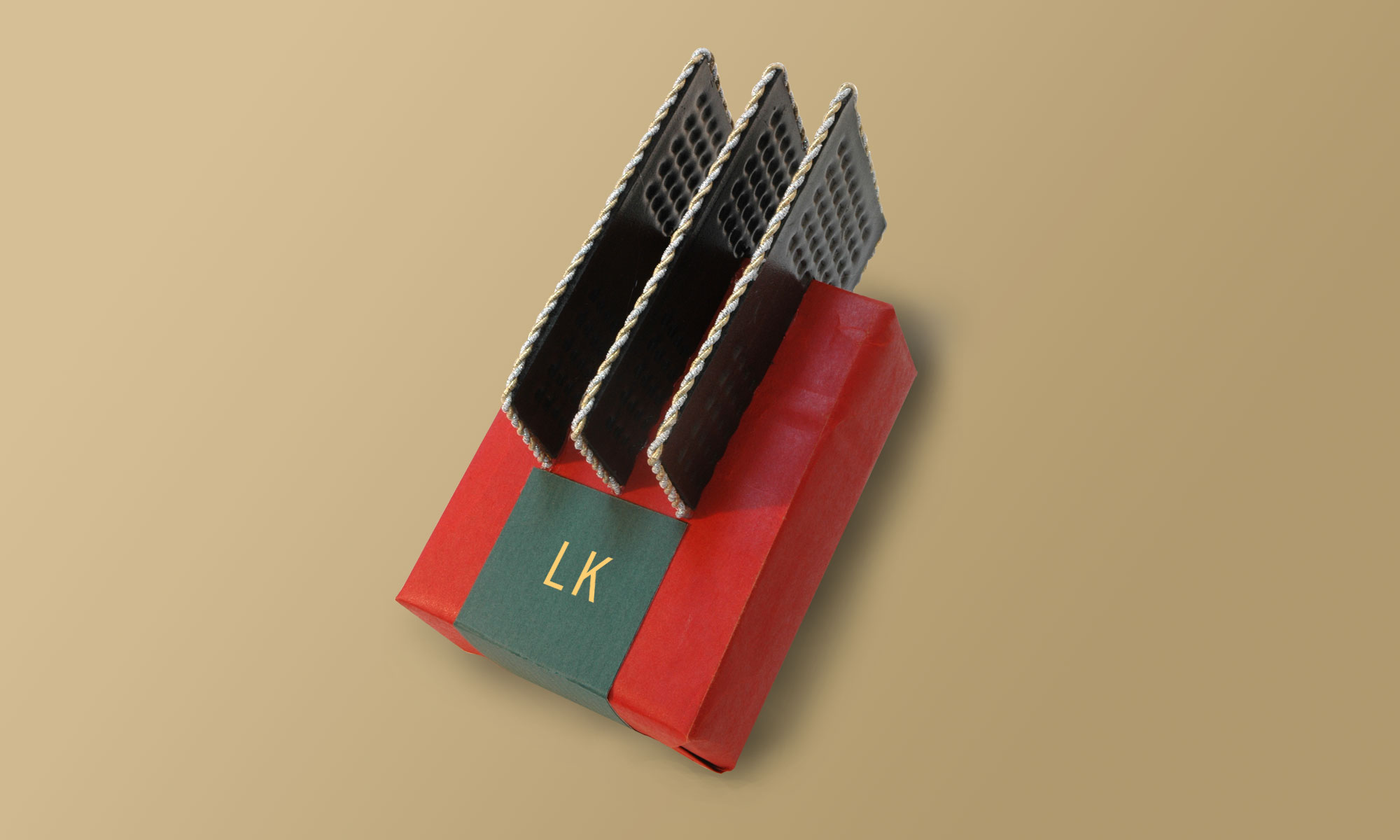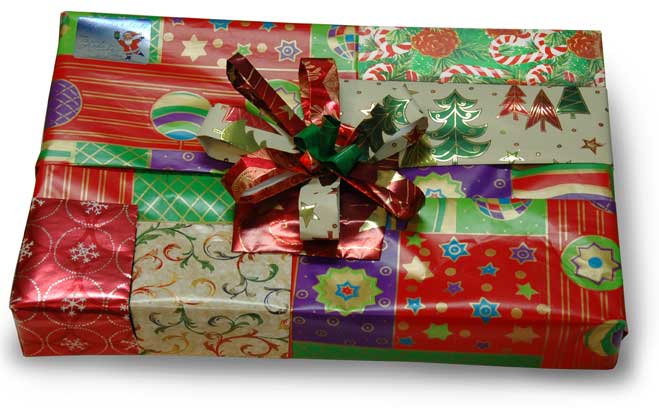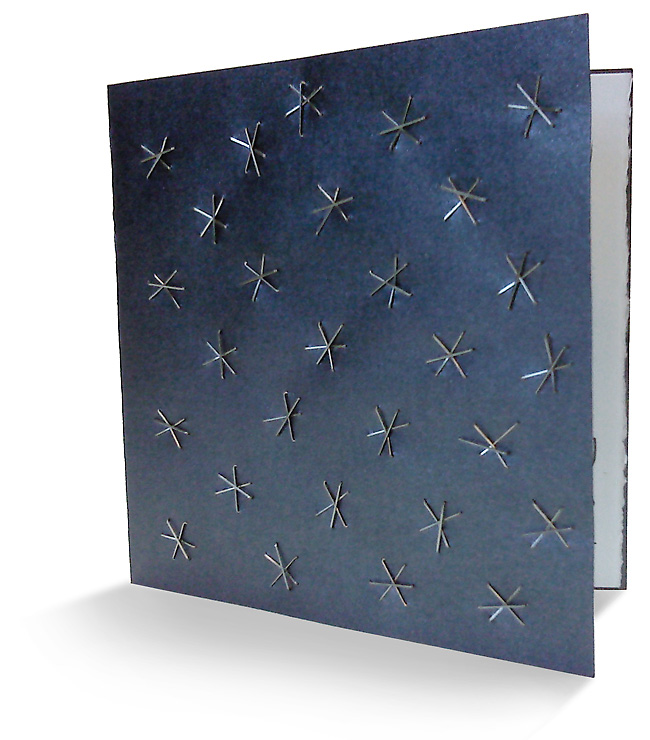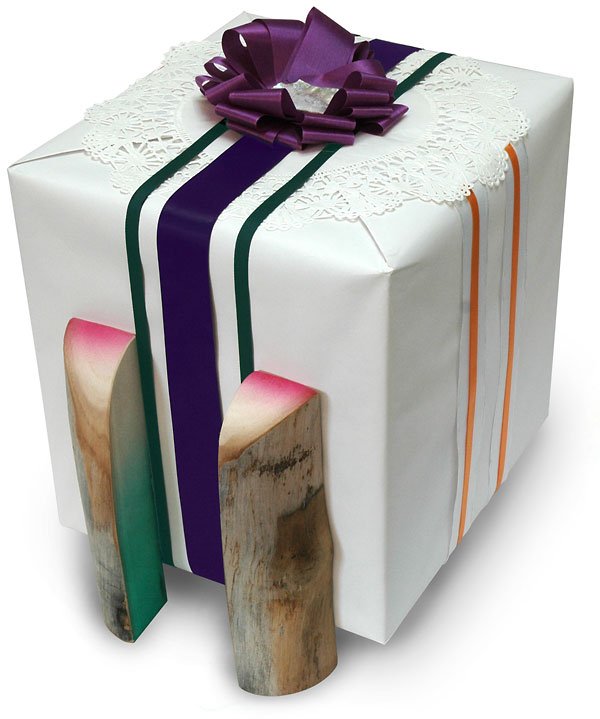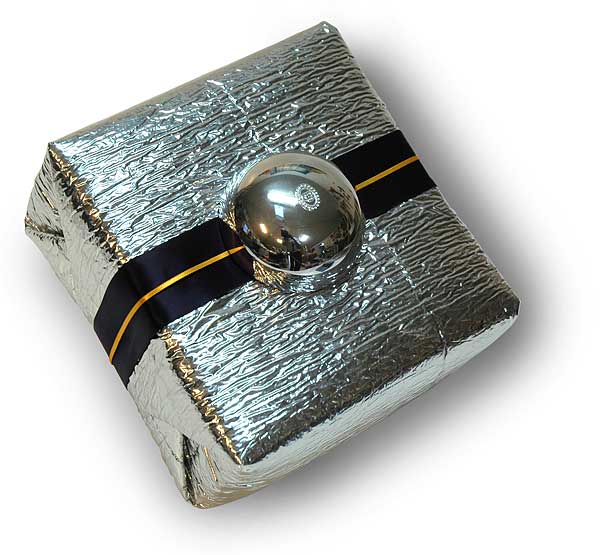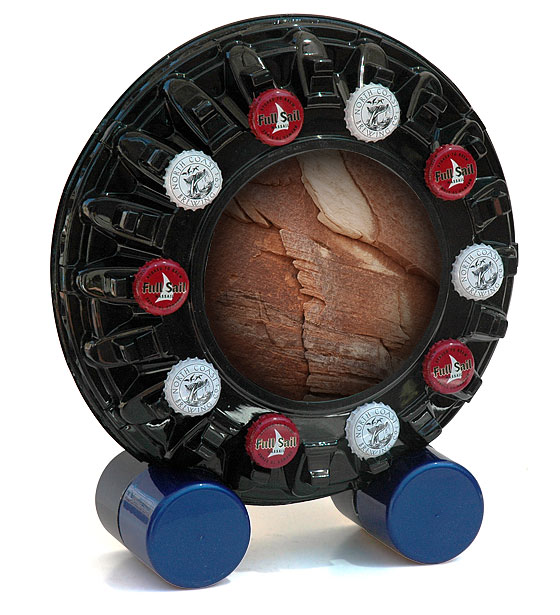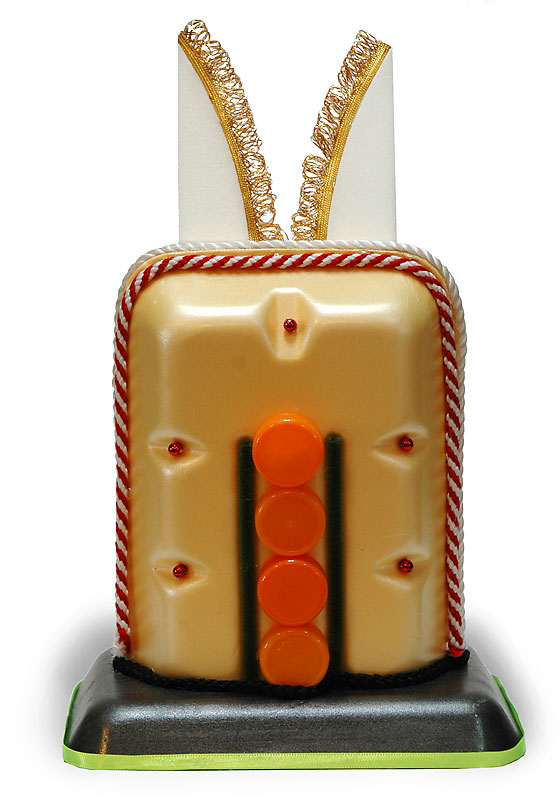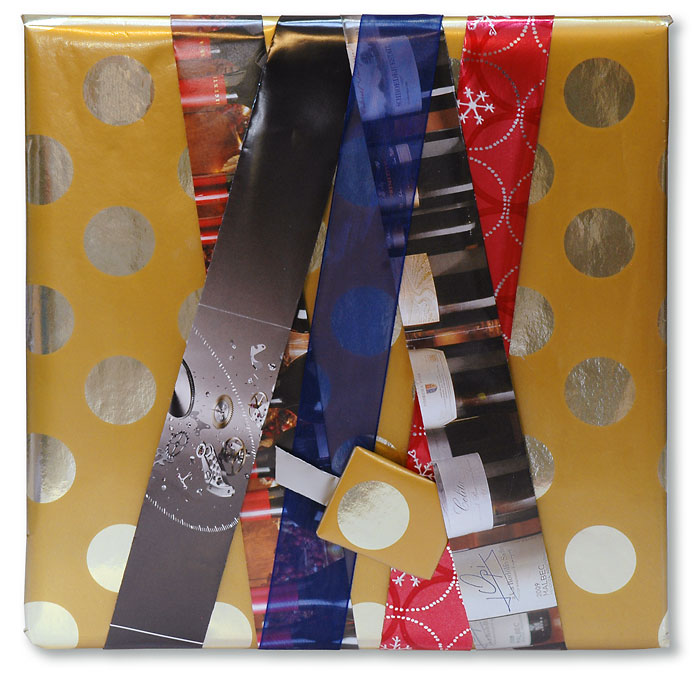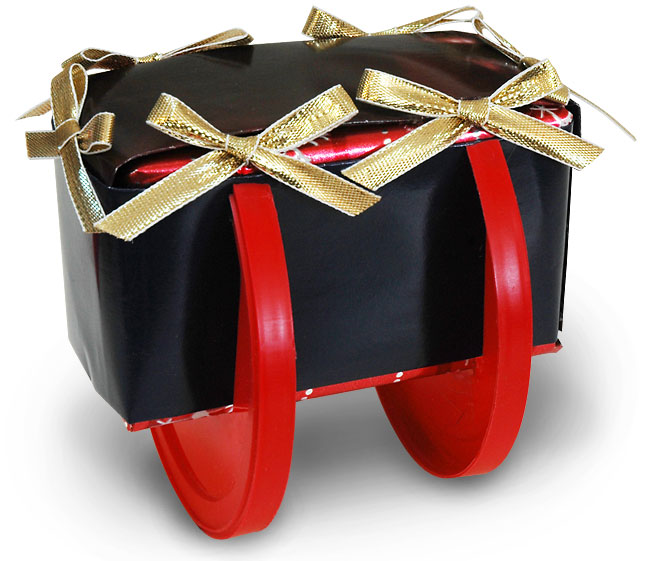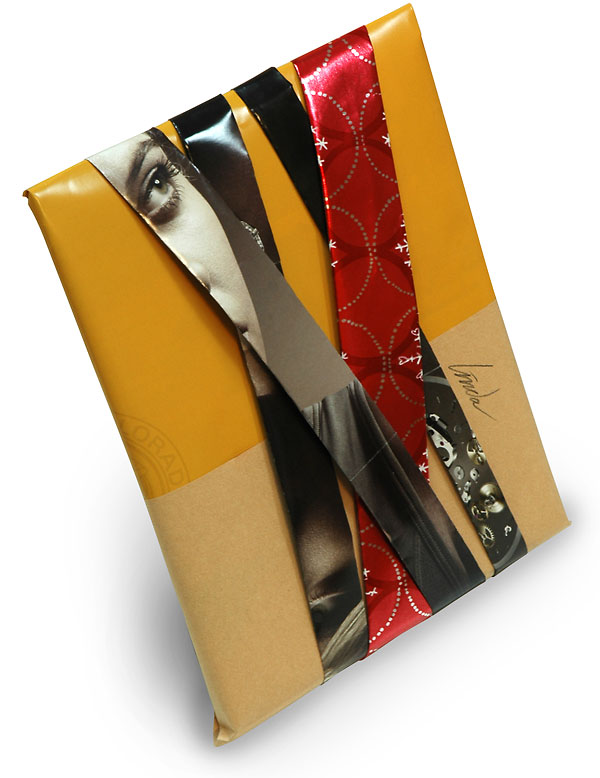For my first wrap of the holiday season I thought I would cleave close to one of the core principles of wrap art: comfortable recycling. The gift went into a used Christmas gift box with a pattern of pine tree, pine cones, and candy canes. When I finished the wrap I noticed that I had inadvertently forgotten to cover up a small piece of it, visible here in the upper-right corner.
The wrap consists of rectangles of wrapping-paper scraps, accumulated over many seasons. I take the rectangles and make a small folded edge on all four sides. I then glue them onto the gift box.
Since none of the fragments were very large, I began the wrap by placing two thin rectangles along the center line of the gift box. I then built up the pattern of the other scraps. True to the wrap-artist principle call “messy back stage” the scraps curve around to the back, but do not cover the back side of the wrap.
I tried a couple of traditional pre-fab bows on the wrap, but their mechanical precision just did not agree with the casual, even goofy quality of the scrap wrap’s crazy quilt. So I began instead to build a scrap-wrap bow, using folded-edge strips. I started with a small circle of cardboard as a base. Then I glued a strip, folded it back on itself, and placed a second spot of glue, making one nice rounded loop. I repeated this procedure, adding progressively smaller loops until it seemed finished. As a last touch I made a small cylinder out of green paper to place, stamen-like, in the center of the bow. I took a folded-edge strip, rolled it up in a spiral-making offset rolling action. I then snipped off the bottom of the spiral with scissors, and hot-glued it into the center of the bow.
The result is wrap that takes its look from the very pile of presents that will soon be its natural environment. When used within a family tradition of giving it also has an archival quality, summarizing as it does many years of wrapping paper, and thus touching various tones of memory.
